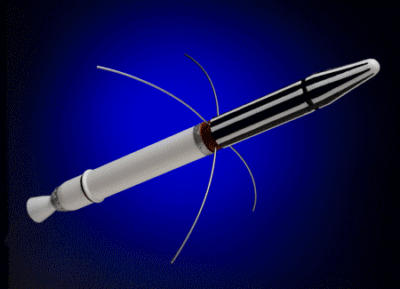 SKC Films Library SKC Films Library |
|
|
| SKC Films Library >> Science >> Physics >> Geophysics |
| Explorer I the first United States scientific satellite Officially known as Satellite 1958 Alpha, Explorer I was sent aloft on January 31, 1958 as part of the United States program for the International Geophysical Year 1957-1958. It was designed and built by the Jet Propulsion Laboratory of the California Institute of Technology under the direction of Dr. William H. Pickering. The satellite instrumentation it carried was designed and built by Dr. James Van Allen of the State University of Iowa.
Once in orbit, the cosmic ray equipment of the satellite indicated a much lower cosmic ray count than had been anticipated. Dr. Van Allen theorized that the equipment may have been saturated by very strong radiation from a belt of charged particles trapped in space by the earth's magnetic field. The existence of what we now know as the Van Allen Belt was confirmed by Explorer III, which was launched on March 26, 1958. The discovery of the Van Allen Belts was the most important discovery made by Explorer I, and probably one of the most outstanding discoveries of the International Geophysical Year. Characteristics Total Weight 30.8 pounds (14
kilograms) Launch Vehicle Jupiter-C rocket Orbit Perigee 220 miles (354
kilometers) Instrumentation cosmic-ray detection package, internal temperature sensor, three external temperature sensors, nose-cone temperature sensor, micrometeorite impact microphone, micrometeorite erosion guages Last Transmission May 23, 1958 SEE ALSO |
| SKC Films Library
>> Science >> Physics >> Geophysics This page was last updated on 04/14/2017. |
